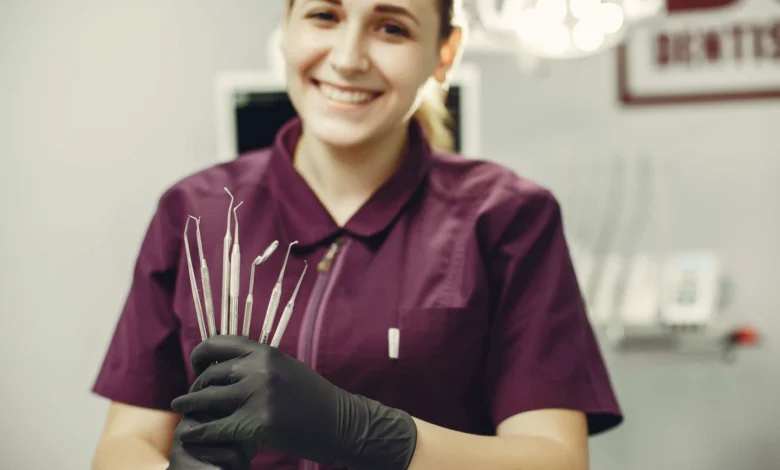A Guide to Gracey Curettes: Invention, Important, Types, and Maintenance

Dental hygiene is crucial for maintaining oral health, and Gracey curettes are integral to the dental hygiene kit to address periodontal diseases.
These specialized dental instruments are designed to effectively remove calculus and plaque from tooth surfaces and below the gumline, preventing and treating periodontal diseases.
History and Development
These curettes were introduced in the 1940s by a periodontist, Dr. Clayton Gracey. Since then, they have undergone several modifications and advancements to enhance their efficacy and usability in dental procedures.
Importance in Dental Hygiene
Periodontal Gracey curettes are vital in managing periodontal diseases and maintaining optimal oral hygiene. They enable dental professionals to remove plaque and calculus effectively, thereby reducing the risk of periodontal infections and preserving periodontal health.
Types of Gracey Curettes
There are several types of Gracey instruments, each designed to access and clean specific surfaces of teeth. The most common types include:
Standard Gracey Dental Curettes
These traditional Gracey dental instruments have long, slender, and curved working ends, allowing for precise subgingival scaling and root planing.
Mini Gracey Curettes
Mini Gracey Dental curettes are smaller, making them ideal for accessing narrow and hard-to-reach areas within the oral cavity, especially in patients with restricted mouth openings.
Purpose and Functionality
Periodontal Gracey curettes are primarily used for removing calculus deposits and bacterial biofilm from tooth surfaces and root surfaces below the gumline. Their unique design enables clinicians to perform thorough scaling and root planing procedures with minimal trauma to surrounding tissues.
How to Use Gracey Dental Curettes
Using Gracey instruments requires proper technique and skill. Dental professionals must hold the instrument at a specific angulation against the tooth surface and employ controlled, overlapping strokes to ensure comprehensive cleaning of the root surfaces.
Benefits of Gracey Curettes
Gracey dental instruments offer several benefits over other instruments used for periodontal procedures, making them popular among dental professionals.
Here are some key advantages:
- Effective plaque and calculus removal
- Precise instrumentation for root debridement
- Minimal trauma to soft tissues
- Enhanced periodontal health outcomes
Limitations and Risks
While Periodontal Gracey curettes are highly effective, they may not suit all patients or clinical scenarios. Improper use or overzealous instrumentation can lead to tissue trauma, gingival recession, or damage to tooth structures.
Proper Maintenance and Sterilization
Gracey dental curettes should be appropriately cleaned, sterilized, and maintained according to recommended protocols to ensure optimal performance and infection control. Regular sharpening is also necessary to maintain their cutting edges.
Comparison with Other Dental Instruments
Gracey instruments offer distinct advantages over traditional scalers and curettes due to their specialized design and functionality, particularly in accessing subgingival areas and performing root planing procedures with precision.
Innovations and Advances in Gracey Curettes
Recent advancements in material science and manufacturing techniques have led to the development of ergonomic handle designs, coated working ends for enhanced durability, and specialized tip configurations to address specific clinical needs.
Tips for Effective Use
Using Gracey instruments effectively is crucial for successful periodontal therapy and scaling procedures.
Here are some tips for its effective use:
- Maintain proper instrument angulation
- Use light, controlled pressure
- Employ overlapping strokes for thorough cleaning
- Regularly assess instrument sharpness
Choosing the Right Gracey Curette
Selecting the appropriate Gracey dental curette depends on factors such as the patient’s periodontal status, tooth anatomy, and clinical requirements. Dental professionals should consider these factors when choosing the most suitable instrument for each case.
Common Misconceptions
Contrary to popular belief, Gracey instruments are not solely for removing supragingival calculus. Their design and functionality are tailored explicitly for subgingival scaling and root planing, making them indispensable tools in periodontal therapy.
To Sum Up!
Gracey curettes are indispensable instruments in the armamentarium of dental professionals, facilitating effective plaque and calculus removal and promoting optimal periodontal health. Understanding their history, types, proper usage, and maintenance is essential for successful clinical outcomes and patient satisfaction.
If you are looking for high-quality Dentistry tools, then check out GerDentUSA. They provide German stainless steel dental tools. In addition, all their tools are available in multiple variations.
FAQs
Are Gracey dentistry instruments suitable for all patients?
Gracey curettes can be used in most patients; however, their suitability may vary depending on individual periodontal conditions and treatment needs.
How often should Gracey dental curettes be sharpened?
Ideally, Gracey instruments should be sharpened whenever their cutting edges become dull, typically after every 10-15 uses.
Can Gracey curettes be sterilized using autoclaving?
Gracey dentistry instruments can be sterilized using autoclaving or other recommended methods for infection control.




